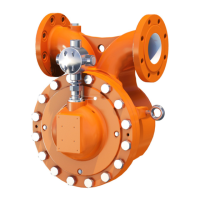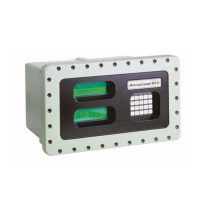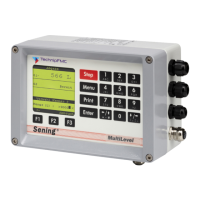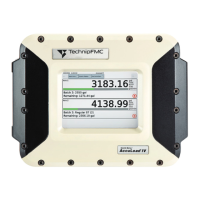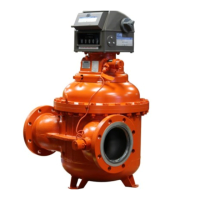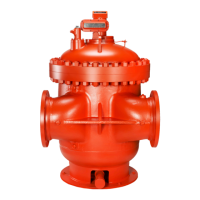Installation / Operation Manual
Detector Information – Type B and C
Type “C” Detector with Fail-safe Switch - This switch allows the output from the Detector
Chassis to be tailored to the requirements of the customer.
The Fail-safe Switch is located on the upper right side of the printed circuit board under
the cover plate. The normal position of the switch is in the Low Fail-safe position and
is so shipped from the factory. Due to the functionality of the detector output when in
the High Fail-safe position, care should be observed when using it to prevent possible
undesired readings.
Below is a chart showing the detector output under certain conditions with the switch
in either the low or high Fail-safe position:
Conditions Low Fail-Safe High Fail-Safe
Overrange
Underrange
Open Probe
Shorted Probe
Note: All voltage readings are DC volts taken on the SIG+ and SIG- Terminals of the
4528 Chassis.
Overrange - Approximately two times S&W range of the chassis.
Underrange - Approximately 2% below zero.
Open Probe - Chassis Pickup wire is not connected to the probe.
Shorted Probe - Occurs when electrical short exists in the probe.
Installation Hints
• Always install probe up stream of dump valve anytime probe is mounted on oil line
coming off treater, separator, etc... Never install downstream as gas will break out
to some degree as oil goes from vessel pressure to lower line pressure after dump
valve. These gas bubbles will be irregular in size and volume as oil flows through
probe. Erratic monitor readings will result.
• Vertical flow through probe is recommended. Either up or down, but not horizontal.
Water often will drop out of oil unless the flow velocity is very high, and if the probe
is mounted horizontally in a slightly low spot, water will build up in probe with result-
ing erroneous readings.
• Always locate the oil sample removal point as close as possible to the probe. Pref-
erably downstream of and below probe in elevation. Failure to have sample point
and measuring point (probe) in close proximity can result in water measurement
inaccuracies which often are flow rate sensitive.
• L.A.C.T. Systems should always have back pressure valves on both the “good” and
“bad” oil lines leading from the L.A.C.T. Constant pressure on the oil in the probe
is essential for close measurement.
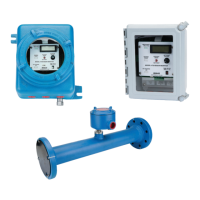
